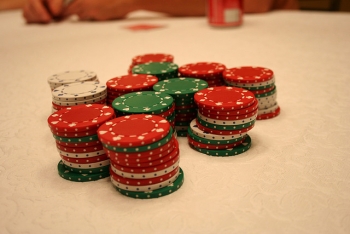Poker Bluffing Strategy by Bestcasinos4fun.com

Nearly all poker movies contain at least one enormous bluff where the hero pushes all his chips in with absolutely nothing and his opponent folds the best hand. This happens in real life too, but not as often as you would think. Let me explain more about the art of the bluff.
There are two types of bluff; the outright bluff as described in the opening paragraph and the semi-bluff whereby although you hope your opponent folds when you bet, you have some outs in case he calls. Before we can attempt either a bluff or a semi-bluff we have to ascertain when it is correct to do so and what circumstances make it the correct play to execute.
Almost all bluffing is triggered by weakness in your opponents. A sign of weakness is checking, although some good players will try to check-raise, whereby they feign weakness by checking only to raise after you have bet. So watch out for that, however if your opponent checks twice you can be fairly sure that he is weak. Another sign of weakness is betting a very small amount into a large pot. Often this is used as a stop tactic to stop you from betting and to get another card cheaply. Don’t let them; a raise at this point will often win the pot.
So now that you know when to bluff lets look at of the two types bluff starting with the outright bluff. You are playing your opponent, not your cards, and the only way to win the pot is to get your opponent to fold. Pick the right moment and the right opponent. When considering your opponent, take into account that you can’t bluff a bad player. They don’t know when they are beat and will call you without hesitation. However a good player will lay down a hand like second pair to a good bluff, the bad player doesn’t know any better and will stubbornly call.
When making a semi-bluff you sense weakness but also have some outs if you happen to get called. Maybe it’s a flush draw or a straight draw with one card to come. The hope is that you don’t get called, but have some backup in the form of outs in case you do.
Other important factors when bluffing are the size of the bluff and the size of your opponents chip stack. The size of the bluff has to be large enough in relation to the pot. It is a lot easier to bluff someone with a small stack compared to a large stack. If you can put a small stack to a decision for all their chips then they can only call you with a very good hand. However, if your bluff represents only a fraction of your opponent’s large stack then it’s much more likely that you will get called.
